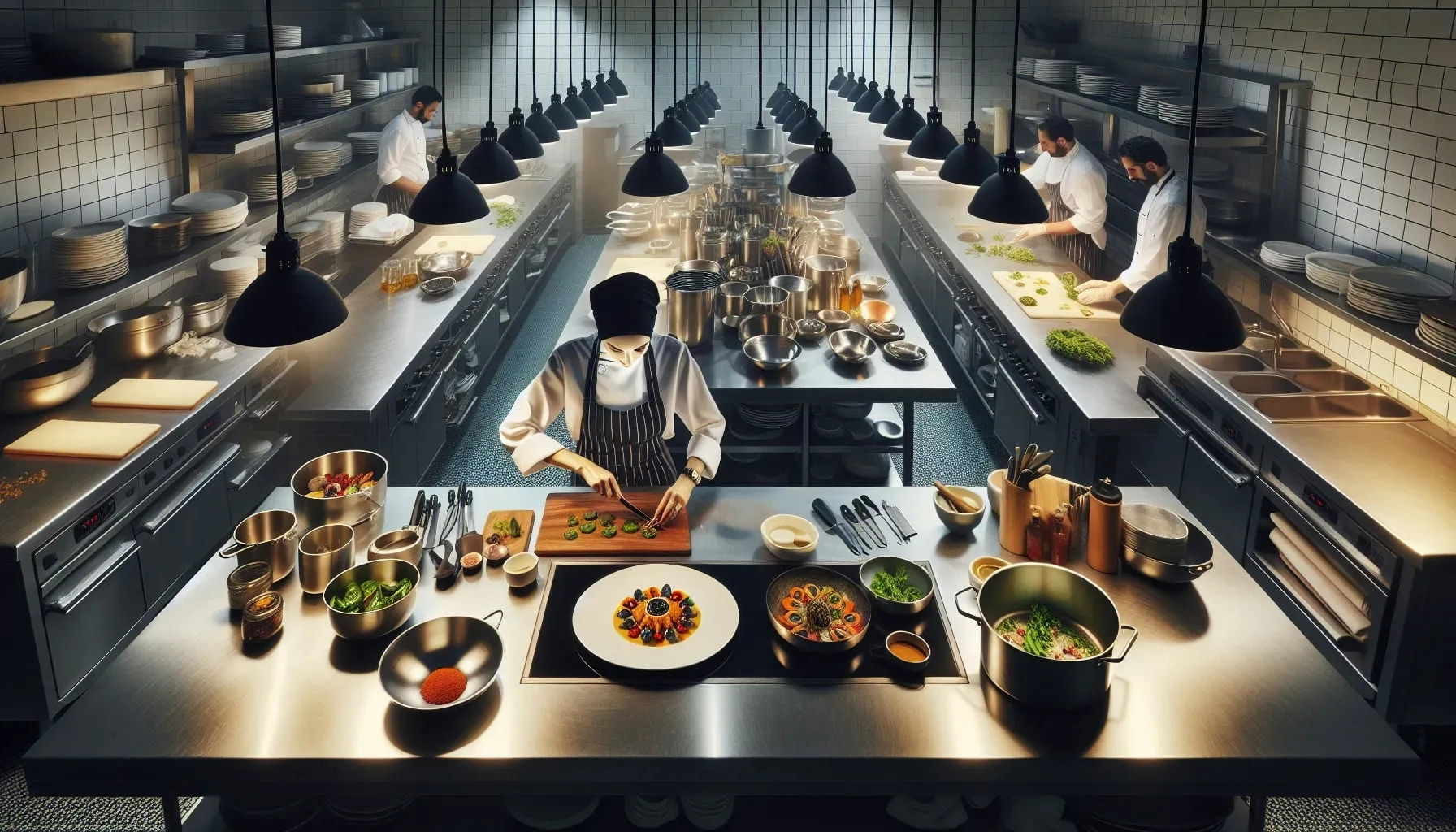Welcome to our deep dive into the latest trends that are currently reshaping the restaurant industry. As we navigate through the dynamic landscape of the food and beverage sector, we'll explore innovative strategies, groundbreaking technologies, and novel concepts that are setting the pace for the future of dining.
The Rise of Technology-Driven Dining Experiences
In the digital age, technology has become an integral part of our lives. The restaurant industry is no exception. From online reservations and digital menus to contactless payments and delivery apps, technology is transforming the way we dine.
Online ordering systems are gaining popularity. Restaurants are leveraging these platforms to streamline their operations and enhance customer experience. With just a few taps on a smartphone, customers can place orders, make payments, and even track their delivery in real-time.
Artificial Intelligence (AI) is another trend that's making waves in the industry. AI-powered chatbots are assisting with customer service, while machine learning algorithms are helping restaurants predict customer behavior and personalize their offerings. Moreover, some restaurants are experimenting with AI-driven kitchen equipment to automate cooking processes.
Augmented Reality (AR) and Virtual Reality (VR) are also making their way into the dining scene. These technologies offer immersive dining experiences, allowing customers to virtually visit the kitchen, meet the chef, or even explore the origin of the ingredients used in their meal.
Embracing Sustainability and Local Sourcing
Sustainability is a buzzword in today's restaurant industry. More and more establishments are adopting eco-friendly practices to reduce their environmental impact. This includes minimizing food waste, using biodegradable packaging, and installing energy-efficient appliances.
Local sourcing is another trend that's gaining traction. Restaurants are sourcing ingredients from local farmers and producers to ensure freshness and quality. This practice not only supports local economies but also reduces the carbon footprint associated with transporting goods over long distances.
Moreover, many restaurants are growing their own herbs and vegetables. Some even have their own bee hives for honey production. This farm-to-table approach allows restaurants to control the quality of their ingredients and offer truly fresh and organic dishes to their customers.
The Emergence of Ghost Kitchens and Food Halls
Ghost kitchens, also known as virtual or cloud kitchens, are a rising trend in the restaurant industry. These are delivery-only establishments with no physical dining space. They operate solely through online platforms and cater to the growing demand for food delivery.
Ghost kitchens offer several advantages. They require less investment in terms of space and staff, allowing restaurant owners to focus on food quality and delivery efficiency. Moreover, they provide an opportunity for restaurants to test new concepts and menus without the risk of a full-scale launch.
On the other hand, food halls are becoming a popular choice for foodies who crave variety. These are large spaces housing multiple food vendors under one roof. Food halls offer a communal dining experience where customers can sample a wide range of cuisines in a single visit.
The Shift Towards Health-Conscious Dining
Health-conscious dining is a trend that's here to stay. More and more customers are seeking healthier options when dining out. This has led to an increase in restaurants offering plant-based dishes, gluten-free options, and low-calorie menus.
Restaurants are also focusing on transparency. They are providing detailed information about the nutritional content of their dishes, the origin of their ingredients, and their cooking methods. This allows customers to make informed decisions about their food choices.
Moreover, some restaurants are incorporating wellness elements into their dining experience. This includes offering yoga classes, meditation sessions, and wellness workshops. These initiatives not only attract health-conscious customers but also promote a holistic approach to dining.
The Influence of Social Media and Influencer Marketing
Social media has become a powerful tool for restaurants to engage with their customers, showcase their offerings, and build their brand. Instagram, in particular, has emerged as a popular platform for food photography. Restaurants are creating visually appealing dishes and using hashtags to reach a wider audience.
Influencer marketing is another trend that's shaping the restaurant industry. Restaurants are partnering with food bloggers and influencers to promote their offerings. These influencers have a large following and their recommendations can significantly boost a restaurant's visibility and customer base.
Moreover, user-generated content is gaining importance. Restaurants are encouraging customers to share their dining experiences on social media. This not only generates buzz but also provides valuable feedback for restaurants to improve their services.
The Advent of Experiential Dining
Experiential dining is a trend that's gaining momentum in the restaurant industry. This concept goes beyond just serving food. It's about creating memorable experiences that engage all the senses.
Themed restaurants are a prime example of experiential dining. From underwater restaurants to dining in the dark, these establishments offer unique experiences that set them apart from traditional dining venues.
Interactive dining is another aspect of experiential dining. This includes DIY meal kits, cooking classes, and chef's table experiences where customers can interact with the chef and learn about the culinary process.
Moreover, some restaurants are incorporating storytelling into their dining experience. They are creating dishes that tell a story or convey a message, adding an emotional element to the dining experience.
Wrapping Up the Future of Dining
As we've explored, the restaurant industry is evolving at a rapid pace. Technology, sustainability, health consciousness, and the desire for unique experiences are driving this change. As these trends continue to shape the industry, one thing remains clear: the future of dining is exciting, innovative, and full of delicious possibilities.
